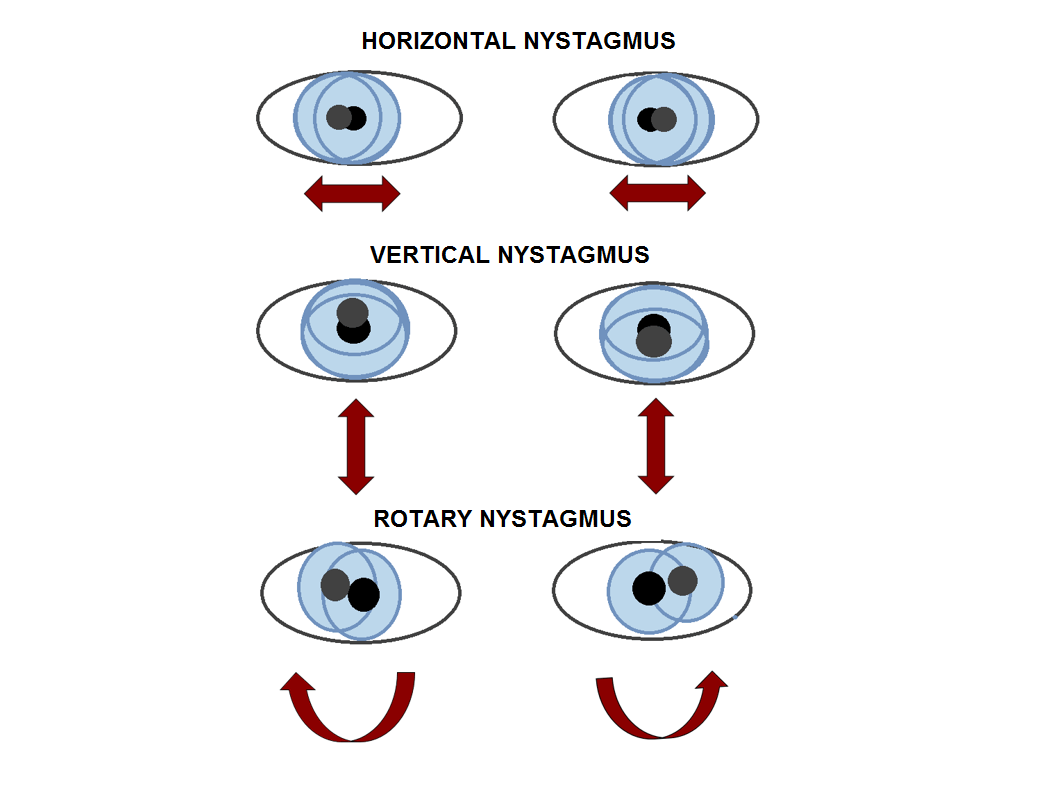
Nystagmus is an involuntary and repetitive eye moving or tremor consisting in the eye going from side to side (horizontal nystagmus, the most frequent), top-down and bottom-up (vertical nystagmus) or on a rotating basis (rotatory or torsional nystagmus). Usually, both eyes are affected. There are several types of nystagmus. Healthy individuals may experience nystagmus as a response of environmental stimuli or posture changes (physiological nystagmus) or due to an “abnormal process” (pathological nystagmus). Pathological nystagmus, depending on the onset age, can be acquired or congenital.
Congenital nystagmus
It appears during the first six months of life and it can consist in an isolated alteration with an unknown cause (most frequently) or be due to another condition, such as albinism, muscular or cerebral palsy, congenital cataracts, amblyopia or damages in some brain parts responsible for carrying visual information to other areas.
Acquired nystagmus
Acquired nystagmus develops later in life and it can be caused by damages in several brain areas responsible for controlling the eye movement or in the hearing organ. It can also have a toxic or medicamentous cause.

Symptoms of nystagmus are various. In congenital nystagmus, the main one is a decrease in vision, because the quick movements make it harder to focus the eyes on any object in order to see it. Sometimes, when nystagmus is acquired, it causes the feeling that the world around us is turning.
It is also common for people suffering from nystagmus to turn their heads, as nystagmus intensity changes depending on the gaze position, reason why there are areas (neutral zones) in which the eye movement is lower, and this is the area where the person tends to look at.
In order to diagnose nystagmus, a physical examination performed by a physician may be sufficient whenever there is a recognizable pattern, although it may also require the collection of ocular moves records (electronystagmography or videonystagmography). Depending on the nystagmus pattern, it may be necessary or not to perform further studies or necessary tests (such as a magnetic resonance) aimed at assessing the area that is suspected of not working correctly, with the aim of identifying its cause.
Treating nystagmus is usually difficult and in many cases, not possible. The treatment will vary depending on the root cause. If the cause can be identified and treated, treatment will be conducted (the cataract responsible for visual loss will be operated, the medication causing nystagmus will be replaced, when possible, the underlying neurological disease will be treated with the most suitable method…). In some cases, the administration of medicines may be effective. Sometimes the use of glasses or prisms can reduce the symptoms as well. Ultimately, injections of botulinum toxin may also be used to reduce severe eye tremors, or it may be necessary to resort to surgery, that changes the muscles position and, even though it cannot completely cure nystagmus, it helps correct the head’s abnormal movement needed to see well.
Contact us or request an appointment with our medical team.